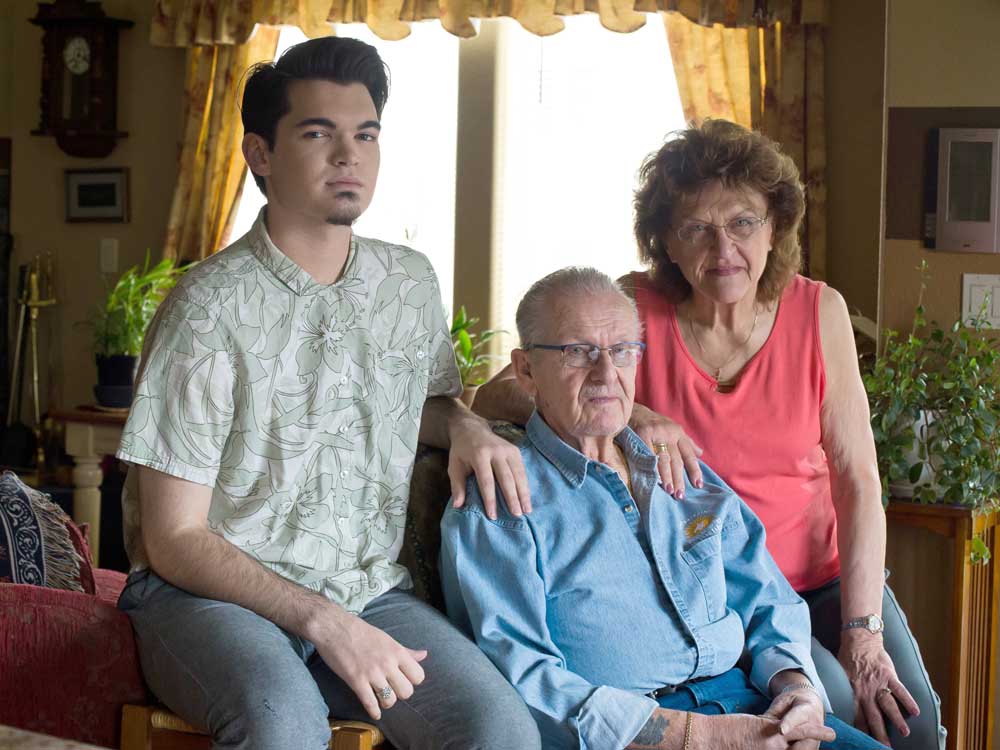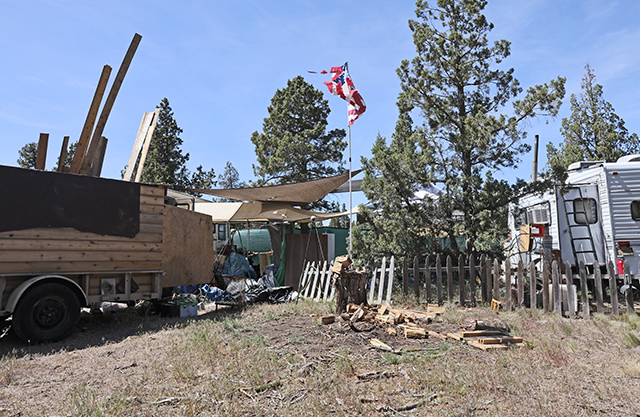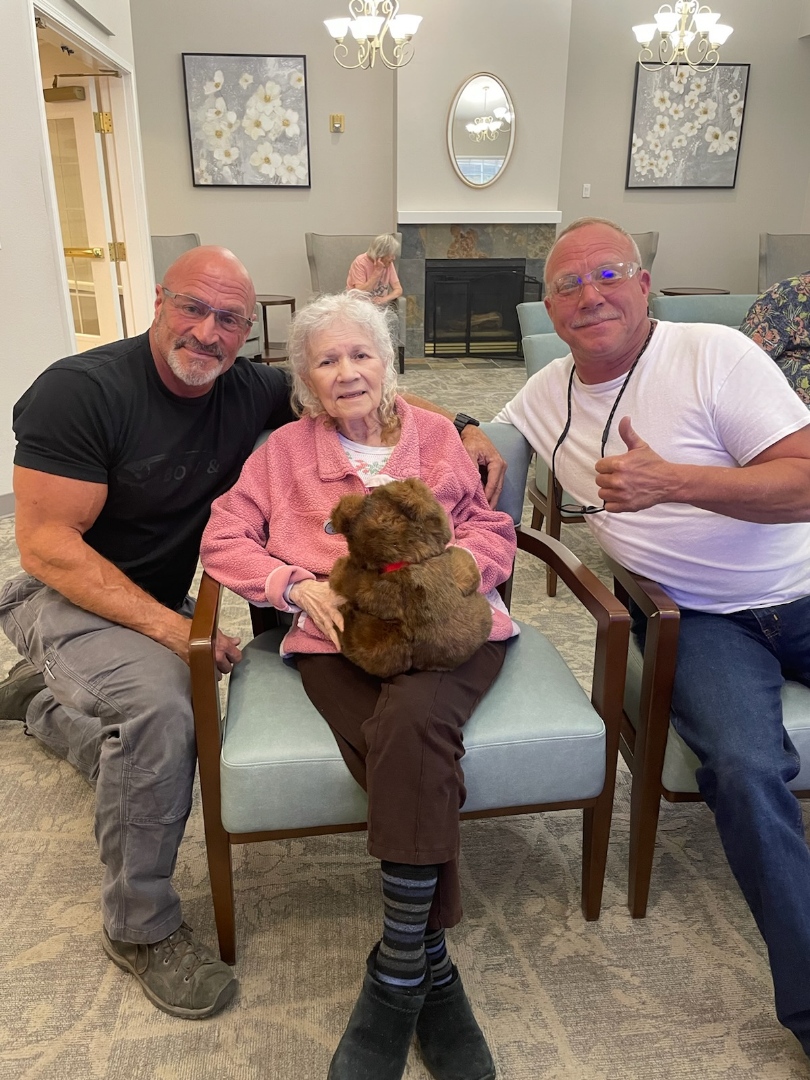Cool-headed Bend teen gives CPR with instructions from dispatch
Published 12:00 am Thursday, March 17, 2016

- Joe Kline / The Bulletin Pauline and Donald Sandretzky sit with Pauline’s grandson, Israel Hawley, 17, at their home in Bend. Hawley performed CPR as instructed by 911 dispatch on Donald Sandretzky when he passed out while driving in December.
The roads in Bend were covered with snow and ice on the morning of Dec. 20 when Donald Sandretzky was driving his family to church, and his heart stopped.
Sandretzky, 79, had just pulled his pickup truck out of the drive on Lois Way. His wife, Pauline, 78, was sitting in the passenger seat, and Pauline’s cool-headed teenage grandson was in the back.
As the truck sailed at low speed across Parrell Road, hit an electric utility box and came to rest in a strip mall parking lot, 17-year-old Israel Hawley dove over the console, put his hand on the brake and turned off the truck’s engine. Then he called 911 and followed the emergency dispatcher’s instructions to pull Sandretzky out and start administering CPR.
Hawley worked alone for eight minutes before a Bend police officer arrived and shocked Sandretzky’s heart into a normal rhythm.
“It was exhausting,” Hawley said. “There were a few times where I was really tired, but I didn’t want to give up. I kept seeing color flushed in his face time and time again. I knew what I was doing was correct.”
Sandretzky left St. Charles Bend four days later with no more than short-term memory loss, Pauline Sandretzky said. Sandretzky’s is one of 50 cases of sudden cardiac arrest last year, and he’s one of only five people who survived with a good outcome, according to Bend Fire Department. That survival rate of 10 percent is better than the national average, which is less than 6 percent, according to a 2015 Institute of Medicine report.
Bend firefighters, police and Deschutes County Dispatch are constantly trying to improve the survival rate, but they need more bystanders to intervene with CPR. The agencies hope people who know CPR will use a smartphone app, PulsePoint, which recently became available to Deschutes County, to receive alerts about nearby events.
The agencies have coordinated training efforts for the past two years with an emphasis on getting bystanders involved, said Petar Hossick, a firefighter and resuscitation training coordinator, who also has a private CPR-training business, Code Ready.
Starting in 2013, dispatchers began trying, as quickly as possible when someone called 911, to determine whether a victim was conscious and breathing, and if not, moving into instructions for High Performance CPR, Hossick said. The method, which is also employed by firefighters and police officers, calls for continuous chest compressions at a rate of 110 compressions per minute.
Hossick said the coordinated training began to pay off in 2014 and again last year, when bystanders were involved in 80 percent of cardiac arrests, an improvement over 63 percent bystander involvement the prior year.
The national average for bystander involvement is just under 40 percent.
Along with adopting High Performance CPR, Bend police officers also began carrying automated defibrillators, or AEDs, in their patrol cars, Hossick said. That was an important change because data showed that police officers were beating fire crews to cardiac arrest events by two to three minutes.
Altogether, the changes pushed Bend’s survival rate from 20 percent in 2012 to 42 percent in 2013 and to 50 percent for the past two years, Hossick said. The survival rate is calculated from the small subset of people for whom shock by an AED is advised. Last year that was a total of 10.
Half of those cardiac arrest victims either weren’t resuscitated, or died after transport to the hospital, Hossick said.
In addition to the five people who, like Sandretzky, survived a witnessed cardiac arrest, another three people who were found later were also resuscitated and left the hospital in good condition, Hossick said.
Bend Fire Department hopes to keep improving its stats, which are already above the national average 32.8 percent, he said, but it will be difficult. “This is not a linear thing. It’s much harder to go from 40 to 50 percent than 30 to 40 percent.”
The PulsePoint app, developed by the not-for-profit PulsePoint Foundation, interfaces with dispatch systems and can alert users to events within a quarter-mile of their phone’s location. Bend Fire Department footed the bill, around $12,000, to build the software interface with Deschutes County Dispatch and will pay the $5,000 annual maintenance fee, said Deputy Chief Dave Howe. The app is now available throughout the county.
Donald Sandretzky doesn’t remember anything about his cardiac arrest or his time in the hospital. His wife, however, still has flashbacks to her panicked moments. While her grandson was on the ground, pumping blood into her husband’s blue and white face, one of the Dollar Tree store employees helped him keep a rhythm. Pauline Sandretzky said she stood by and she cried out for mercy. As a retired nurse who trained in CPR, she was surprised by her own helpless reaction. “When it’s your loved one, it’s different.”
— Reporter: 541-617-7860, kmclaughlin@bendbulletin.com






